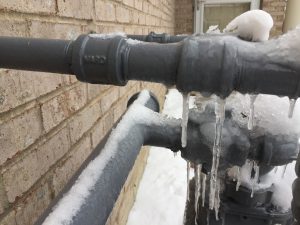On this page further down yow will discover more worthwhile content about How To Avoid Freezing Pipes.

Cold weather can damage your pipes, particularly by freezing pipelines. Below's just how to avoid it from occurring and what to do if it does.
Introduction
As temperature levels decrease, the risk of icy pipes rises, potentially resulting in pricey repair services and water damage. Understanding exactly how to prevent icy pipes is critical for house owners in cold environments.
Avoidance Tips
Protecting at risk pipes
Cover pipes in insulation sleeves or utilize warmth tape to safeguard them from freezing temperature levels. Concentrate on pipes in unheated or outside locations of the home.
Home heating techniques
Keep indoor rooms properly heated up, specifically locations with plumbing. Open cabinet doors to allow warm air to circulate around pipelines under sinks.
Just how to determine frozen pipes
Seek lowered water flow from faucets, unusual smells or noises from pipes, and noticeable frost on exposed pipelines.
Long-Term Solutions
Structural adjustments
Take into consideration rerouting pipes far from exterior wall surfaces or unheated locations. Add additional insulation to attics, cellars, and crawl spaces.
Upgrading insulation
Buy high-quality insulation for pipes, attics, and wall surfaces. Correct insulation helps keep consistent temperatures and minimizes the danger of frozen pipelines.
Safeguarding Exterior Plumbing
Garden hoses and outside faucets
Separate and drain yard pipes prior to winter. Set up frost-proof spigots or cover outdoor taps with shielded caps.
Recognizing Icy Pipes
What causes pipes to ice up?
Pipes freeze when subjected to temperatures below 32 ° F (0 ° C) for extended durations. As water inside the pipelines ices up, it expands, putting pressure on the pipeline wall surfaces and possibly creating them to break.
Risks and damages
Frozen pipes can cause water system disturbances, home damages, and costly repair services. Burst pipes can flood homes and cause extensive architectural damages.
Signs of Frozen Pipes
Determining icy pipelines early can prevent them from bursting.
What to Do If Your Pipes Freeze
Immediate activities to take
If you believe icy pipes, maintain taps available to soothe pressure as the ice thaws. Utilize a hairdryer or towels taken in hot water to thaw pipes gradually.
Conclusion
Stopping frozen pipelines calls for positive measures and fast reactions. By understanding the causes, indications, and preventive measures, home owners can safeguard their plumbing throughout cold weather.
5 Ways to Prevent Frozen Pipes
Drain Outdoor Faucets and Disconnect Hoses
First, close the shut-off valve that controls the flow of water in the pipe to your outdoor faucet. Then, head outside to disconnect and drain your hose and open the outdoor faucet to allow the water to completely drain out of the line. Turn off the faucet when done. Finally, head back to the shut-off valve and drain the remaining water inside the pipe into a bucket or container. Additionally, if you have a home irrigation system, you should consider hiring an expert to clear the system of water each year.
Insulate Pipes
One of the best and most cost-effective methods for preventing frozen water pipes is to wrap your pipes with insulation. This is especially important for areas in your home that aren’t exposed to heat, such as an attic. We suggest using foam sleeves, which can typically be found at your local hardware store.
Keep Heat Running at 65
Your pipes are located inside your walls, and the temperature there is much colder than the rest of the house. To prevent your pipes from freezing, The Insurance Information Institute suggests that you keep your home heated to at least 65 degrees, even when traveling. You may want to invest in smart devices that can keep an eye on the temperature in your home while you’re away.
Leave Water Dripping
Moving water — even a small trickle — can prevent ice from forming inside your pipes. When freezing temps are imminent, start a drip of water from all faucets that serve exposed pipes. Leaving a few faucets running will also help relieve pressure inside the pipes and help prevent a rupture if the water inside freezes.
Open Cupboard Doors
Warm your kitchen and bathroom pipes by opening cupboards and vanities. You should also leave your interior doors ajar to help warm air circulate evenly throughout your home.

We had been made aware of that report on 6 Ways to Prevent Frozen Pipes from someone on a different site. Liked our blog? Please share it. Let somebody else check it out. Thank you for your time. Please pay a visit to our website back soon.
Book Service